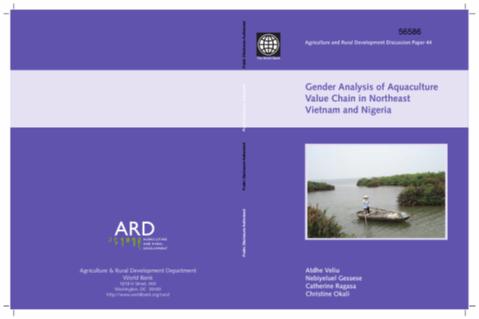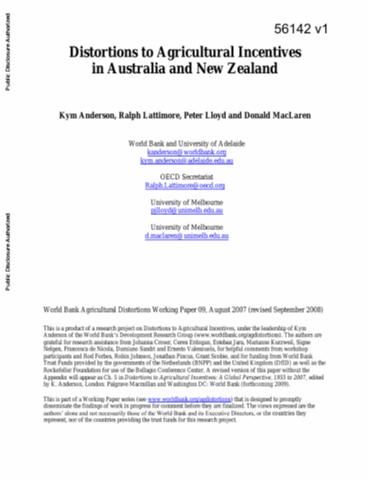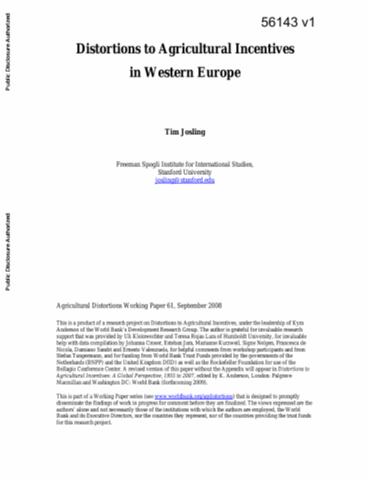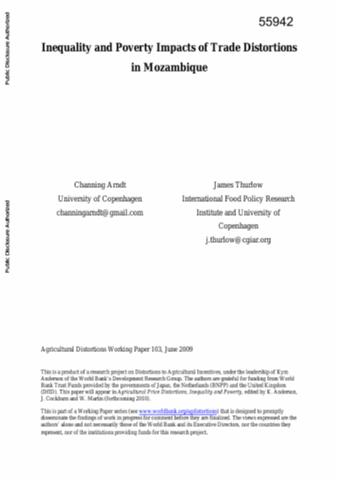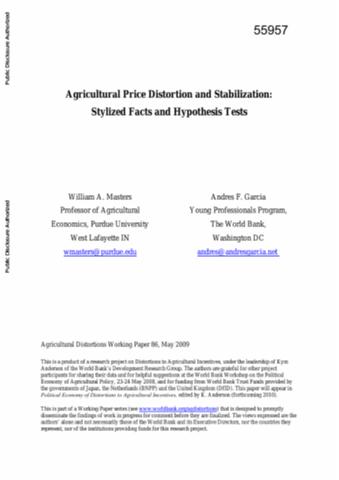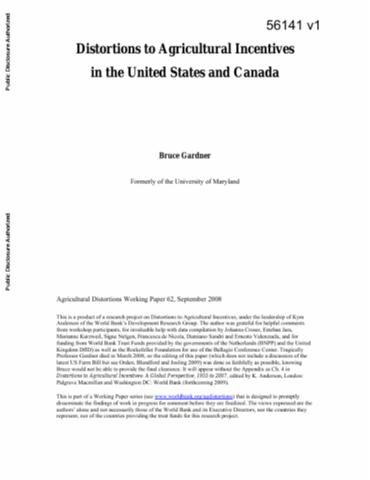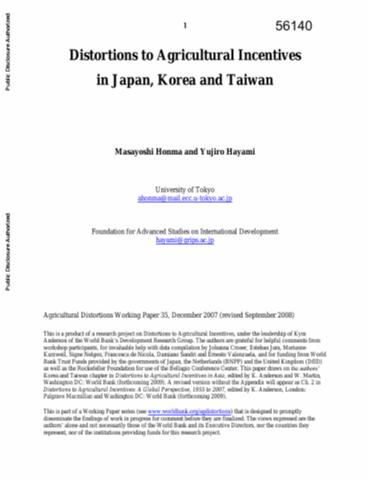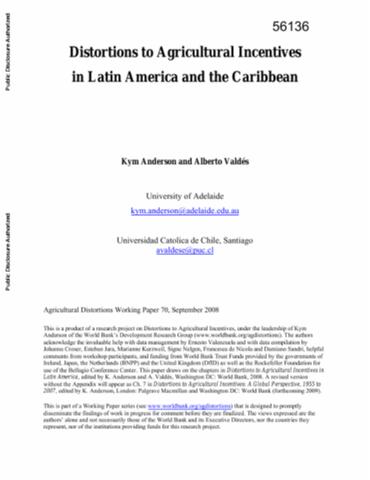
Topics and Regions
Details
Location
Contributions
Displaying 31 - 40 of 630Gender Analysis of Aquaculture Value Chain in Northeast Vietnam and Nigeria
The report is an initiative of the Agriculture and Rural Development Department (ARD) of the World Bank. Aquaculture is the fastest-growing food sector in the world and is expected to contribute more than 50 percent of total fish consumption by 2020. Just over 90 percent of aquaculture production originates in Asia, and nearly 70 percent in China alone. Efforts to expand aquaculture production to meet the ever increasing worldwide demand for seafood continue.
Distortions to Agricultural Incentives in Australia and New Zealand
In 1990, Australia and New Zealand were ranked around 25th and 37th in terms of Gross National Product (GNP) per capita, having been the highest-income countries in the world one hundred years earlier. Those countries relatively poor economic growth performance over that long period contrasts markedly with that of the past 15 years, when these two economies out-performed most other high-income countries. This difference in growth performance is due to major economic policy reforms during the past two to three decades, both at and behind the border.
Distortions to Agricultural Incentives in Sub-Saharan and North Africa
This chapter begins with a brief summary of economic growth and structural changes in the region since the 1950s and of agricultural and other economic policy developments as they affected the farm sector at the time of and in various stages after independence from colonial powers.
Distortions to Agricultural Incentives in Western Europe
Agriculture in Western Europe enjoys a degree of diversity that reflects a wide variety of soils and climatic conditions ranging from the arid Mediterranean regions to the Arctic Circle. Superimposed on this natural diversity is the complexity of different social, economic and political conditions in the eighteen countries that are the subject of this chapter.
Inequality and Poverty Impacts of Trade Distortions in Mozambique
Although Mozambique has considerable agricultural potential, rural poverty remains extremely high. This paper examines the extent to which global and domestic price distortions affect agricultural production and national poverty. The author develops a computable general equilibrium (CGE) and micro-simulation model of Mozambique that is linked to the results of a global model. This framework is used to examine the effects of eliminating global and national price distortions.
From Agriculture to Nutrition
The report seeks to analyze what has been learned about how agricultural interventions influence nutrition outcomes in low-and middle-income countries, focusing on the target populations of the millennium development goals-people living on less than a dollar a day. It also sets out to synthesize lessons from past efforts to improve the synergies between agriculture and nutrition outcomes. The report identifies a number of developments in agriculture and nutrition that have transformed the context in which nutrition is affected by agriculture.
Agricultural Price Distortion and Stabilization
This paper describes agricultural policy choices and tests some predictions of political economy theories. It begins with three broad stylized facts: governments tend to tax agriculture in poorer countries, and subsidize it in richer ones, tax both imports and exports more than nontradables and tax more and subsidize less where there is more land per capita.
Distortions to Agricultural Incentives in the United States and Canada
There is much in common between the agricultural sectors of the United States and Canada. This chapter begins with a brief background on the two sectors, then reviews their histories of farm policy developments before reporting new estimates of rates of assistance to their farmers and their consequences for taxpayers and consumers. This is followed by an explanation of the politics behind the evolution and gyrations in farm policies in the two countries, and some speculation on the prospect for reform.
Distortions to Agricultural Incentives in Japan, Korea, and Taiwan
The story of agricultural policy in Northeast Asia over the past 50 years illustrates the dramatic changes that can occur in distortions to agricultural incentives faced by producers and consumers at different stages of economic development.
Distortions to Agricultural Incentives in Latin America and the Caribbean
This study on Latin America is based on a sample of eight countries, comprising the big four economies of Argentina, Brazil, Chile, and Mexico; Colombia and Ecuador, two of the poorest South American tropical countries; the Dominican Republic, the largest Caribbean economy; and Nicaragua, the poorest country in Central America. Together, in 2000-04, these countries accounted for 78 percent of the region's population, 80 percent of the region's agricultural value added, and 84 percent of the total gross domestic product (GDP) of Latin America.

